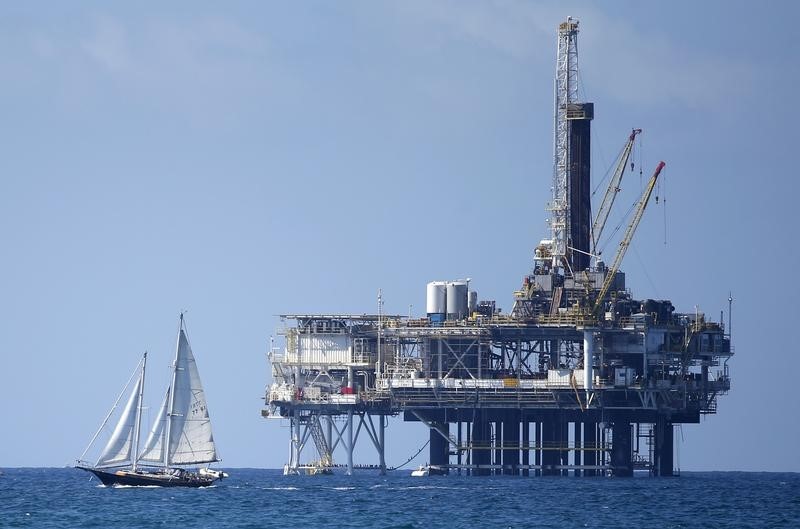By Rujun Shen
SINGAPORE (Reuters) - Offshore drillers globally are increasingly considering "warm stacking" their rigs to take them temporarily off the market, as they gear up for a slowdown in the hunt for oil with crude prices sliding to five-year lows.
Rigs in warm stack maintain basic operations and most of the crew, and can be put to use once the owner gets a contract. Drillers put rigs in warm stacks to lower operational costs and also to keep them sufficiently ready for quick deployment, meaning they are hopeful a downturn won't be a prolonged one.
Rigs can also be "cold stacked", or shut down, which typically happens when an owner does not expect to find work for an extended period of time.
Oil prices have fallen about 40 percent in the past six months, with international benchmark Brent
"Six months ago, no one talked about stacking rigs," said Thomas Tan, chief executive officer at Kim Heng Offshore & Marine Holdings Ltd
Tan said his firm has received enquiries to stack dozens of rigs over the past few weeks. Kim Heng currently services four rigs in warm stack around Singapore. The company serves about 60 rigs a year in different stage of operations, including providing repair, maintenance and logistics services.
"A lot of people are looking at warm stack, as they hope that the market will turn around quickly," Tan said. "Cold stack is on their mind... but they haven't given up hope yet."
Seadrill Ltd (OL:SDRL), the world's largest driller by market value until recently, expects to see a pickup in stacking and scrapping next year, its CEO said. And Transocean Ltd (N:RIG), which owns the world's largest offshore drilling rig fleet, said it may retire additional rigs because of a sluggish market.
Transocean and Seadrill are among Kim Heng's customers.
RATES FALL, SUPPLY GROWS
Drillers, who provide rigs on hire to oil producers, are in a pinch because day rates to hire rigs have fallen this year while supply grows.
The day rate for a top specification drillship, which can work in water up to 12,000 feet (3,658 metres) deep, was recently quoted at as low as $400,000, down from $600,000 last year. Even rates for jack-up rigs, generally working in water depth below 400 feet, have started to weaken in recent months after holding up relatively well earlier in the year.
Rig orders soared in recent years when oil prices topped $100 per barrel, making it more profitable to explore in hard-to-reach underwater areas. The global fleet of jackup rigs is forecast to grow 9 percent in 2015 and another 7 percent in 2016, Oslo-based investment bank Pareto Securities estimated.
Pareto also expected the number of jackups and floaters - drillships and semi-submersibles - in warm and cold stack to each reach 100 in the next 12-18 months from 60 and 53 now.
The marginal cost of producing one new barrel of oil varies, ranging from as cheap as $10 for Middle East onshore, to $60 in deepwater offshore, and above $70 in U.S. shale oil, according to a Reuters survey in September.
Some producers have announced spending cutbacks.
Malaysia's Petroliam Nasional Bhd (PETR.UL) said it will cut next year's capital spending by 15-20 percent.
That's the kind of bad news the drilling industry is trying to get a handle on.

"What we are seeing now is that people are just standing back and waiting to understand the dynamics of the market before making decisions," said Jason Waldie, Associate Director at energy consultancy Douglas Westwood.
(Editing by Emily Kaiser and Muralikumar Anantharaman)